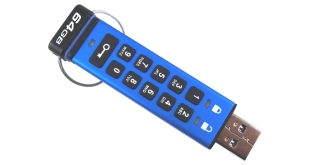Technological advancement has exploded in the past 30 years. In the past decade, we’ve gone from the buggy, inefficient first incarnations of smartphones to sleek, practical devices in almost every adult’s pocket in the United States. Apple’s trademarked tagline, “there’s an app for that,” seems to apply literally to almost any realm, with automated investing platforms, innovative new modes of communication, and wearable devices that enable you to use those apps almost anywhere.
The Learning Problem
For millennials and younger generations who grew up seeing this rapid evolution of technology, learning and mastering these breakthroughs isn’t a particular challenge. They’ve grown accustomed to seeing new tech releases in relatively short order, and their core understanding of digital interactions makes it easy to translate and understand the basics of new platforms.
But what if you’re from an older generation, where learning new skills wasn’t quite as fast-paced or as demanding? Or what if you struggle to get the gist of new technologies more than your peers? Thankfully, there are a few helpful “hacks” that can help you progress.
3 Hacks to Improve Your Understanding
Let’s say you’ve purchased a new smartphone, or similar device, and you’re having trouble understanding how it works, or what you’re supposed to do with it. Reading the owner’s manual didn’t help, and you don’t have a technician you can ask for assistance.
You can try these three easy methods to improve your ability to adopt this technology:
- Immerse yourself. Our brains are hard-wired to learn through trial and error, and later, by repetition. We form understandings of our surroundings by experimenting, seeing a result, and then repeating that result many times over. This is why immersion is the best way to learn a language; you’re forced to try and comprehend a language you don’t readily understand, so you experiment, you fail, and you ultimately learn the way we’re programmed to. You can apply this same technique to new technology; rather than standing back and trying to conceptually understand how it works, get your hands on it and start playing around. If you do something wrong, you’ll find out. If you do something right, you’ll find out. You may be embarrassed or intimidated at first, but eventually you’ll get the hang of it.
- Watch others use the technology. No matter how much you tinker with a new gadget, there will be some features and capabilities you miss. This is why it’s important to watch how other people, ideally experts, are using the technology. Ask to see your friends and family members as they use the same device as you, or log onto YouTube and look for demonstrations of your device. You don’t need to turn this into a lesson, either; all you need to do is watch, and let yourself absorb how the device is being used.
- Break down your individual goals. Instead of trying to learn a complex technology all at once, like “smartphones” or “tablets,” focus on much smaller, more achievable goals. For example, you might work on learning how to text your friends and family, then move on to mastering individual apps that are present on your device. This makes the learning process much less intimidating, and more rewarding when you accomplish those smaller goals. Use the Pareto principle (the idea that 20 percent of your efforts are responsible for 80 percent of your results) to identify the roughly 20 percent of device functions that are going to use the majority of your time; focus on learning those first.
Learning new technologies doesn’t have to be painful, and it doesn’t have to be hard. Everybody learns a little differently, especially across multiple generations, but there are some fundamental principles of learning that can help you become a master much faster than if you rely on conventional instructional methods alone. Now get that new device, and immerse yourself!
 KitGuru KitGuru.net – Tech News | Hardware News | Hardware Reviews | IOS | Mobile | Gaming | Graphics Cards
KitGuru KitGuru.net – Tech News | Hardware News | Hardware Reviews | IOS | Mobile | Gaming | Graphics Cards



